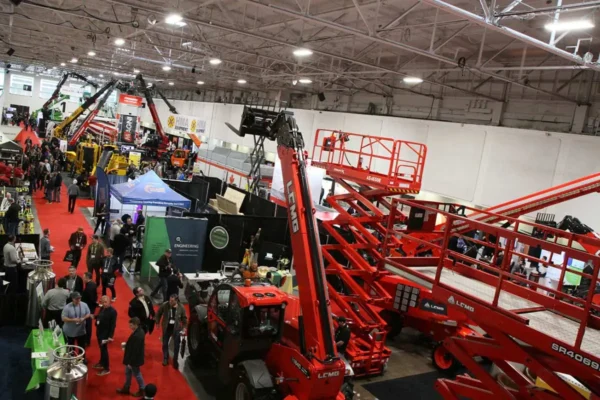
Editor’s note:
This article is part one of a series that will report on what exhibition companies, exhibitors and tradeshow venues are doing to make the industry environmentally friendly.
The modern tradeshow resembles a short-lived solar system where companies orbit with their competitors, enjoying their brief time in the light of a sun destined for super nova. When the sun explodes and the show ends, evidence of its existence remains for years to come.
It remains in the form of discarded paper, cardboard, plastic, furnishings, carpet, and a myriad of other materials that have outlived their usefulness in just a few short days.
The green paradox faced by tradeshow companies is how an industry whose function is to construct temporary structures destined for immediate disposal can also be environmentally sustainable.
This process requires not only fundamental changes in how the industry sees itself, but also fundamental changes in the expectations of show participants.
“It’s so easy to walk away from whatever is left behind after the event has concluded,” said Joe Pestka, Freeman spokesperson. “I think one of the biggest challenges is to have folks think about not only the source of the materials, but also the end life of the materials and follow through so they aren’t left on the show floor.”
As eco-awareness increases, exhibition companies are aspiring to the sustainability standards that many corporations across the world are adopting for daily operations.
Exhibitors are choosing options which will minimize the footprint they leave behind and venues are finding ways to accommodate and promote these practices in order to satisfy their customers.
Each one of these industry sectors is taking action to minimize the environmental impact left from its day in the sun.
Major exhibition companies like Freeman and Global Experience Specialists (GES) have formulated clear, sustainability policies and have made greener alternatives available to their clients.
According to their websites, each offer recycled carpets, biodegradable trash bags, and low-energy lighting options. They both also have programs in place to recover and reuse many materials that regularly appear on the show floor.
These exhibition industry giants have further set examples for the business community by incorporating green practices in their own operations. One of the basic practices employed by both companies is providing electronic show manuals to their clients. Freeman estimates this practice alone has reduced its production of printed paper by 24 million sheets over the past three years.
“Freeman has and will partner with customers in a collaborative effort to help find ways to make their events more eco-friendly,” said Pestka. “As part of Freeman’s overall cultural values, employee owners in 70 branch facilities across North America are actively involved in fulfilling our green philosophy.”
Inside its fabrication facilities, Freeman recycles aluminum and steel exhibit components for use in other custom designs. Graphic panels are printed on a special material that is stripped of artwork and reused for future shows. The company also transports nearly 90 percent of its exhibit client freight through the EPA SmartWay Transport® Partner program, which recognizes partners for setting and achieving greenhouse gas reduction goals in freight transport.
Through a strategic partnership with Liberty Salvage and the Las Vegas Convention Center, GES has diverted approximately 60 percent of show waste from the landfill.
“GES also has a joint venture on repurposed items that can’t be recycled,” said Sheila LeMaster, CMP and director of exhibitor services for GES. “Items such as large banners, old wooden crates and show cases are given to the Gilcrease Nature Sanctuary in Las Vegas. These items are used for animal insulation, bird cages, walls, etc.”
Other companies have been green since before green was chic.
Octanorm USA works with over 150 partners in 55 countries to facilitate the repetitive use of its modular, aluminum design components. It boasts cradle-to-cradle technology which results in a 95 percent return to the raw material cycle.
“CB Displays International has been an international partner with Octanorm for over 20 years,” said Mike McDaniel, national account executive for CB Displays. “Reusable and recyclable materials are an integrated part of our daily business.”
The continuation of tradeshows as a central marketing strategy for companies need not spell disaster for its universe from an environmental standpoint. Major strides toward sustainability have reduced millions of tons of waste and preserved significant natural resources.
“Each year, more of our clients are becoming aware of the availability and importance of green materials,” said McDaniel. “We continue to look for manufacturers and distributors who offer those products for incorporation into our exhibit and tradeshow designs”
In part two of this series, ECN will examine how individual exhibitors are reducing their carbon footprints on their journey toward greener practices.















